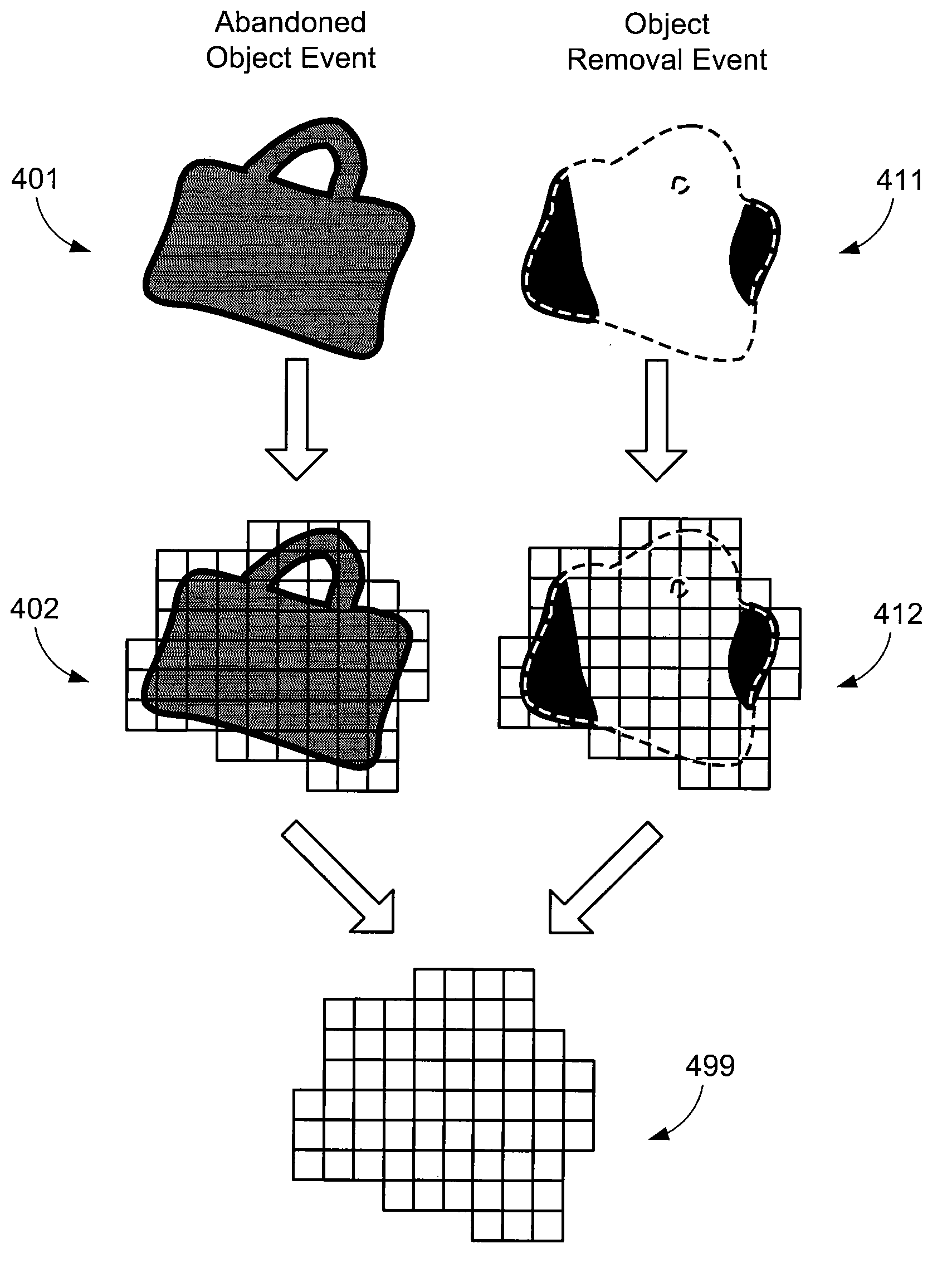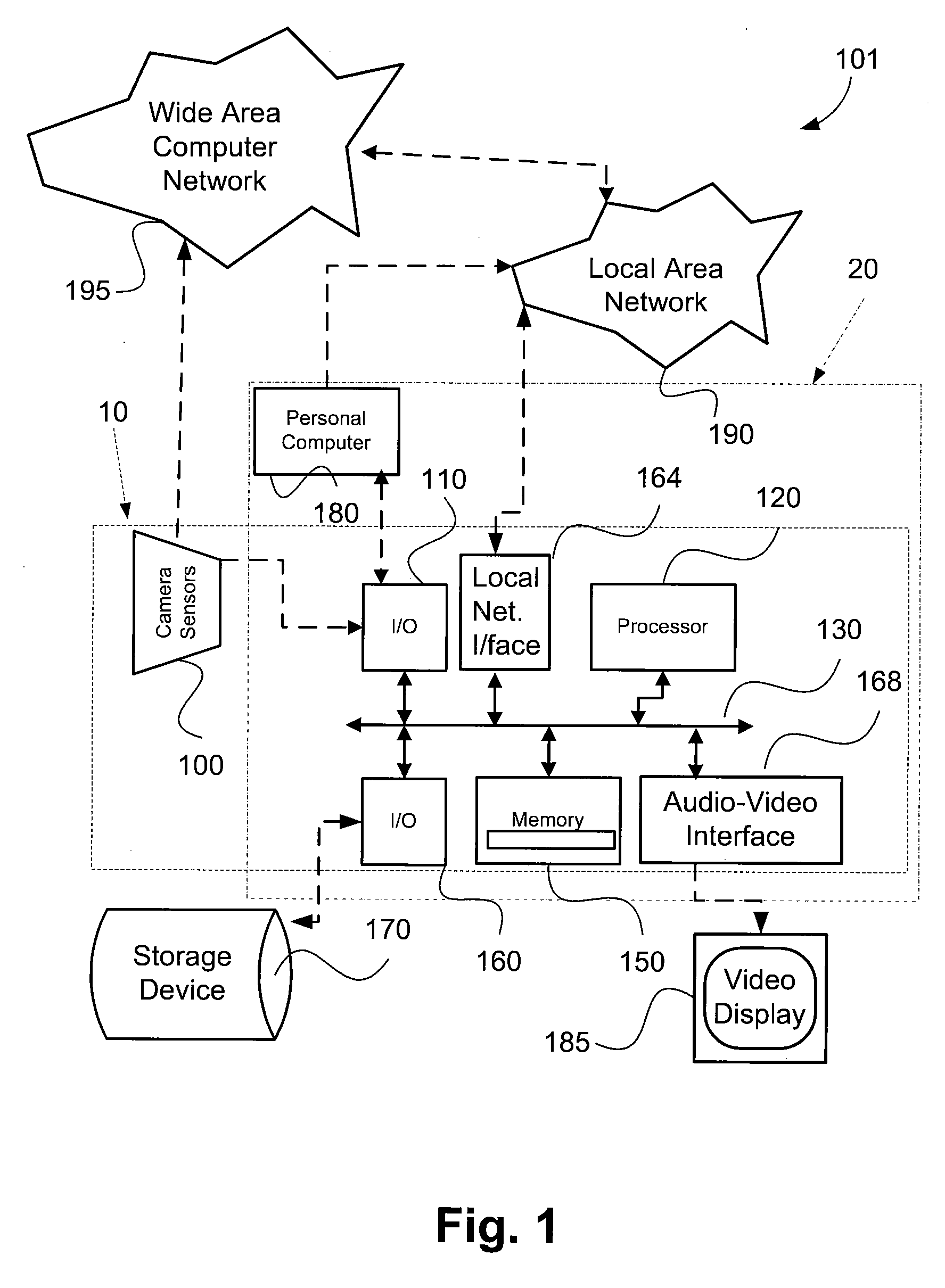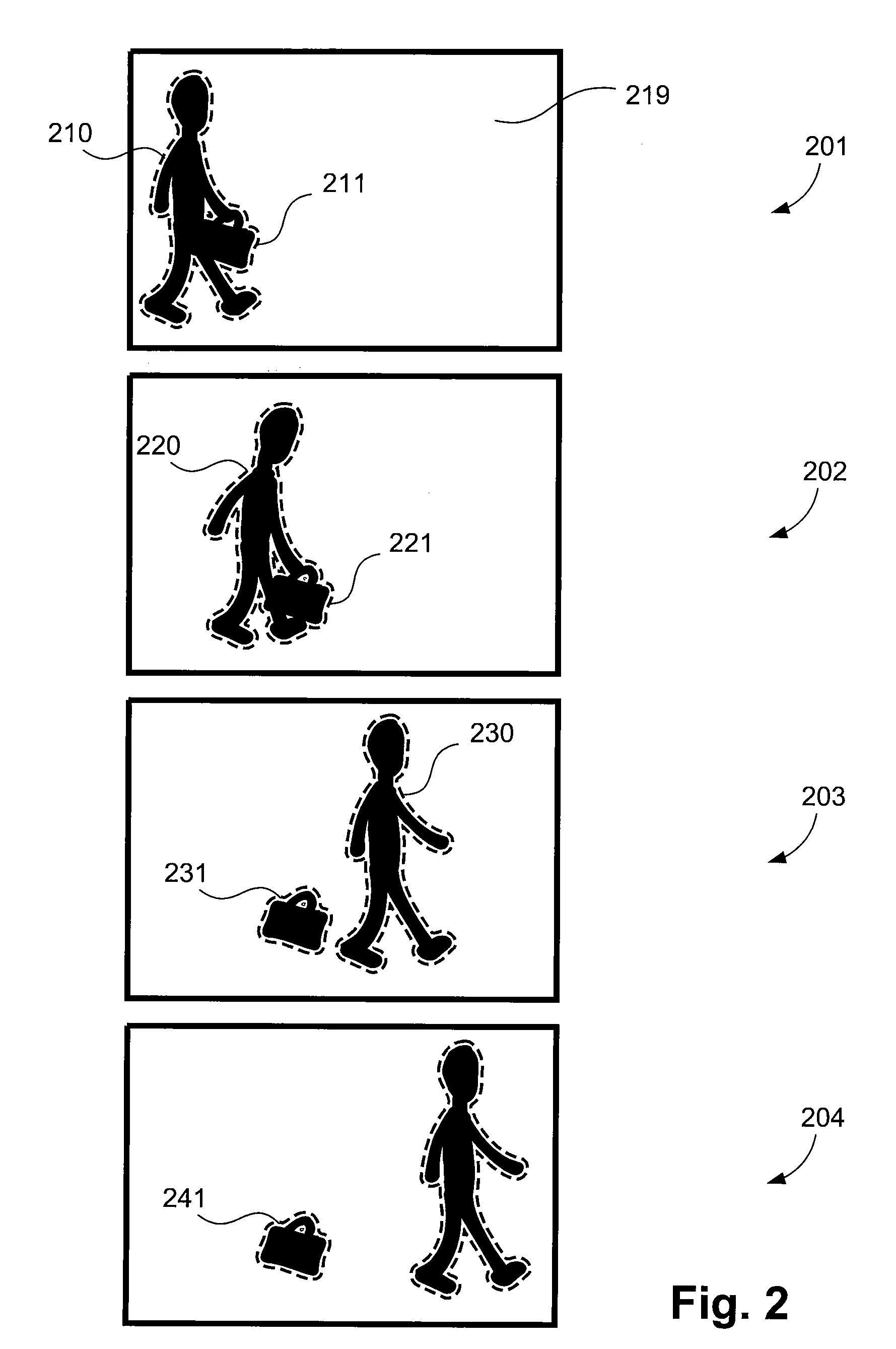Detection of abandoned and vanished objects
a technology of abandoned objects and objects, applied in the field of video analytics, can solve the problems of high memory usage and costly computation time, and achieve the effect of reducing the cost of computation
- Summary
- Abstract
- Description
- Claims
- Application Information
AI Technical Summary
Benefits of technology
Problems solved by technology
Method used
Image
Examples
Embodiment Construction
[0055]Where reference is made in any one or more of the accompanying drawings to steps and / or features that have the same reference numerals, those steps and / or features have for the purposes of this description the same function(s) or operation(s), unless the contrary intention appears.
Overview
[0056]Disclosed herein are a computer-implementable method and system for classifying a detected region of change of a video frame as one of an abandoned object event and an object removal event, wherein a plurality of boundary blocks define a boundary of the region of change. The boundary blocks may be, for example, Discrete Cosine Transform (DCT) blocks or pixels. For each one of a set of the boundary blocks, the method determines a predicted edge characteristic for the boundary block and an observed edge characteristic for the boundary block. In one embodiment, the predicted edge characteristic is calculated for a given boundary block based on the relative positioning of the arrangement of...
PUM
 Login to View More
Login to View More Abstract
Description
Claims
Application Information
 Login to View More
Login to View More - R&D
- Intellectual Property
- Life Sciences
- Materials
- Tech Scout
- Unparalleled Data Quality
- Higher Quality Content
- 60% Fewer Hallucinations
Browse by: Latest US Patents, China's latest patents, Technical Efficacy Thesaurus, Application Domain, Technology Topic, Popular Technical Reports.
© 2025 PatSnap. All rights reserved.Legal|Privacy policy|Modern Slavery Act Transparency Statement|Sitemap|About US| Contact US: help@patsnap.com



